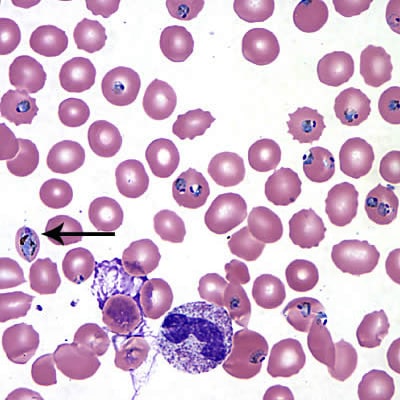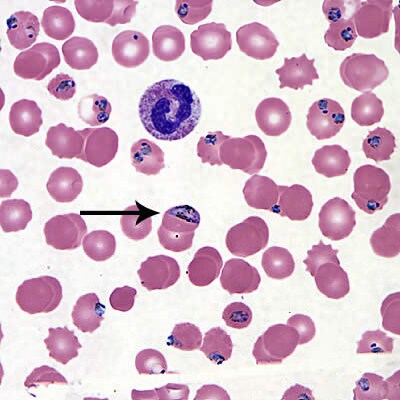
Case #145 - December, 2004
A 47-year-old woman traveled to the Dominican Republic. Upon her return she experienced fever and chills and went to see her doctor. A blood smear was ordered by her physician, stained with Wright’s-Giemsa, and examined. The following images show what was seen at 1000× magnification. What is your diagnosis? Based on what criteria?
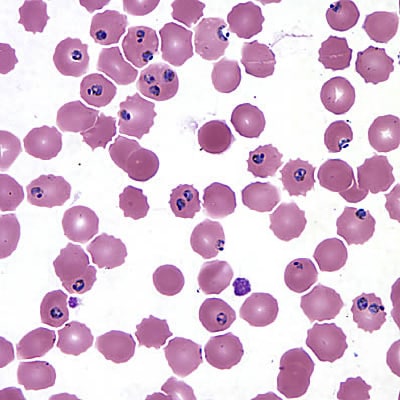
Figure A
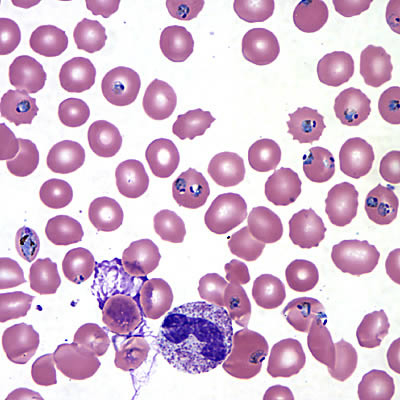
Figure B
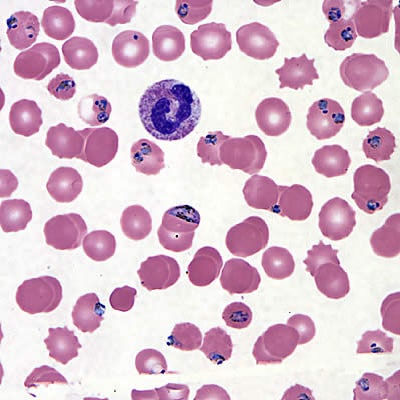
Figure C
This case was kindly contributed by the Illinois Department of Public Health Chicago Laboratory.
Images presented in the monthly case studies are from specimens submitted for diagnosis or archiving. On rare occasions, clinical histories given may be partly fictitious.
DPDx is an educational resource designed for health professionals and laboratory scientists. For an overview including prevention, control, and treatment visit www.cdc.gov/parasites/.
